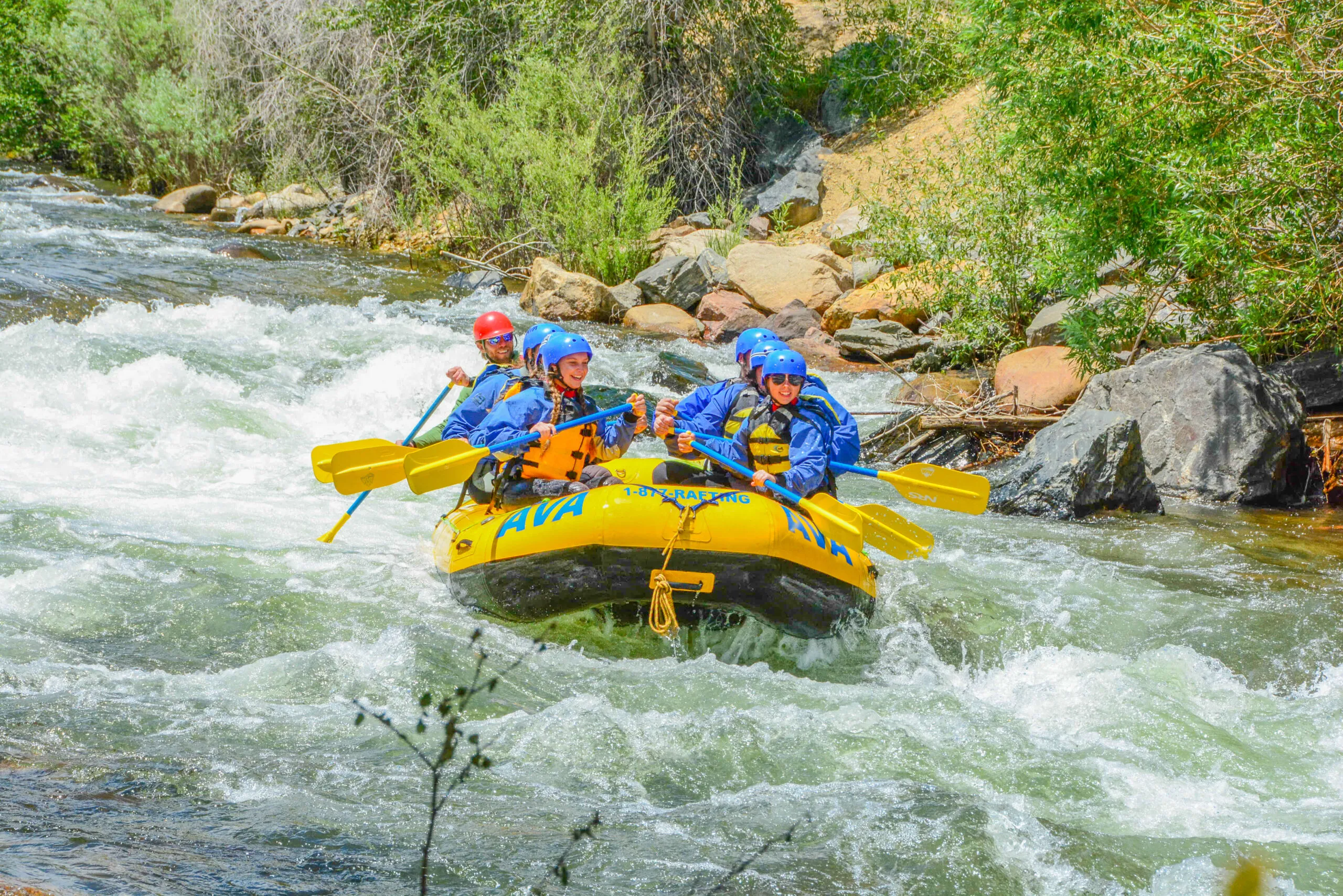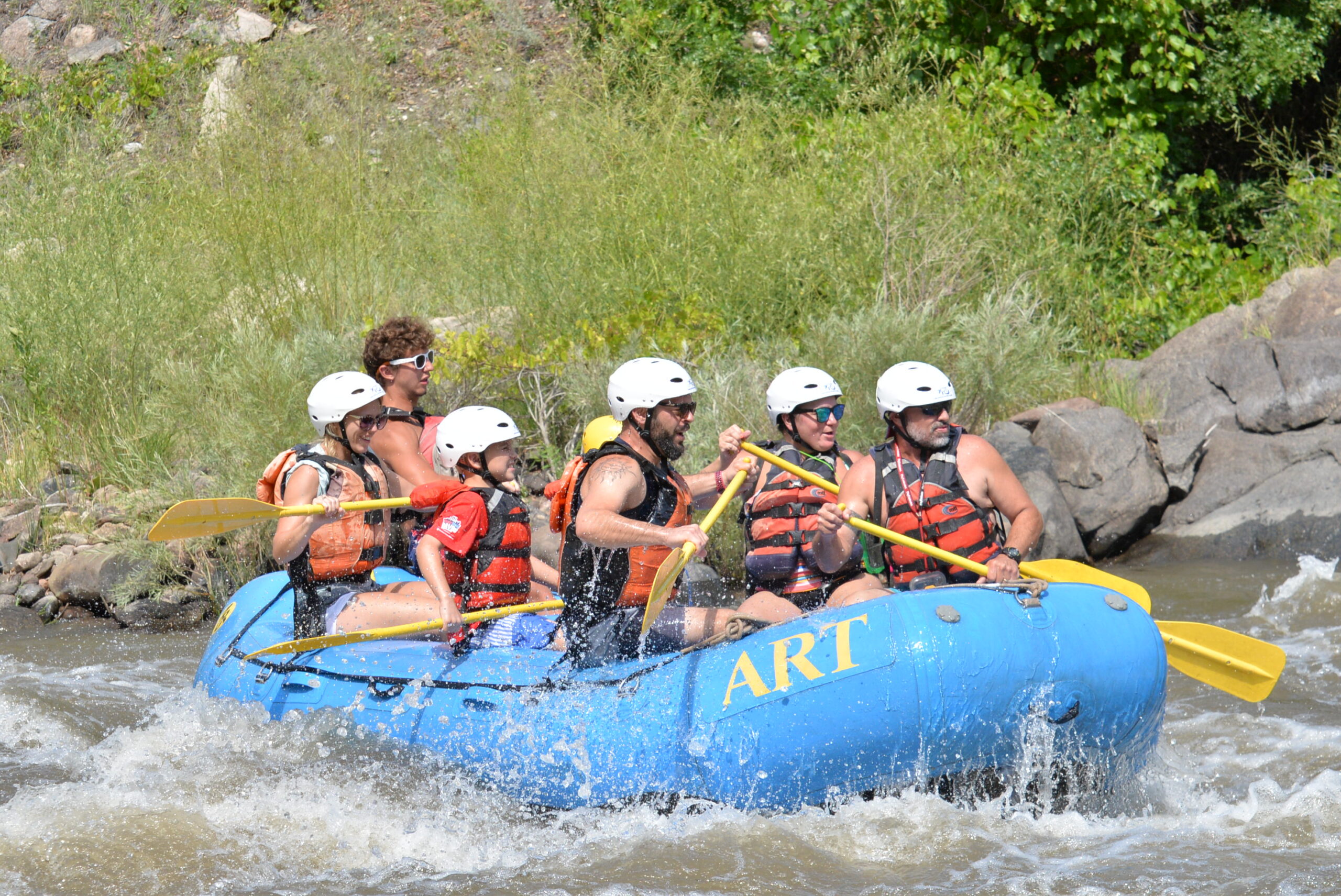Navigate the Rapids with Confidence: White River Raft Hire Colorado Insights
Navigate the Rapids with Confidence: White River Raft Hire Colorado Insights
Blog Article
From Beginners to Professionals: Master the Art of River Rafting and Conquer the Rapids
From beginners looking to dip their toes right into the globe of river rafting to skilled professionals seeking to dominate the most tough rapids, understanding the art of river rafting needs a combination of experience, skill, and knowledge. In this discussion, we will discover necessary devices, choosing the appropriate river and rapids for your ability level, understanding paddling and navigating techniques, safety pointers and safety measures, as well as advanced strategies for professional river rafters.
Important Tools for River Rafting
When preparing for a river rafting journey, having the proper crucial devices is critical for a safe and delightful experience. The initial piece of devices that every river rafter need to have is a correctly fitted individual flotation protection device (PFD) or life jacket.
An additional essential piece of devices is a tough and reputable safety helmet. Safety helmets shield the rafter's head from potential injuries triggered by clashing with rocks or various other items in the river. It is important to choose a safety helmet that fits comfortably and has a solid chin band to safeguard it in place.
Along with Safety helmets and pfds, river rafters need to additionally have a paddle. Paddles come in different lengths and materials, so it is necessary to select one that appropriates for the specific and the kind of rafting journey intended. Paddles needs to be light-weight, sturdy, and have a comfy grasp.
Last but not least, river rafters should have appropriate footwear, such as closed-toe water footwear or shoes with a safe and secure band. These supply defense and grip while strolling on slippery river banks or in the raft.
Choosing the Right River and Rapids for Your Ability Degree
Picking the appropriate river and rapids that straighten with your skill level is a critical element of intending a pleasurable and secure river rafting experience. These rivers offer a mild intro to rafting, allowing novices to build confidence and create basic abilities.
Intermediate rafters can test themselves with Class III and IV rapids. These rivers feature modest to solid currents, larger waves, and a lot more intricate obstacles. Intermediate rafters need to have solid paddling skills, the capability to browse through challenges, and the capability to take care of more difficult circumstances.
Specialist rafters, with comprehensive experience and advanced abilities, can tackle the ultimate challenge of Class V and VI rapids. These rivers are defined by exceptionally turbulent water, substantial waves, and hazardous barriers. Expert rafters must possess extraordinary paddling skills, strong fitness, and the capability to make instant decisions under high-pressure circumstances.
It is essential to study and seek advice from expert outfitters or knowledgeable rafters when choosing a river. They can provide valuable understanding right into the problem level and prospective hazards of different rivers, ensuring that you pick a river that matches your ability level and offers the right equilibrium of obstacle and enjoyment. By choosing the suitable river and rapids, you can guarantee a thrilling and safe river rafting experience.
Understanding the Methods of Paddling and Navigation
After carefully picking the ideal river and rapids that line up with your skill degree, the following action in grasping your river rafting experience is to develop the essential strategies of paddling and navigation. Paddling is the primary approach of driving your raft via the rapids, and grasping the right techniques can greatly improve your control and maneuverability on the water.
To paddle properly, it is essential to keep a strong and well balanced position in the raft. Keep in mind to maintain your paddle blade perpendicular to the water's surface area and make use of a combination of ahead and backward strokes to navigate via the rapids.
Navigating is one more critical ability in river rafting. It entails reviewing the river and understanding its currents, obstacles, and eddies.
Security Tips and Measures for River Rafting
To guarantee a satisfying and risk-free river rafting experience, it is vital to focus on security and take suitable safety measures throughout your journey. River rafting can be an exciting adventure, but it additionally features intrinsic dangers. By following these safety pointers and preventative measures, you can lessen the possibilities of accidents and make certain a smooth and delightful experience.
Firstly, it is essential to wear suitable security equipment. This includes a well-fitted individual flotation device (PFD) or life jacket that is authorized by pertinent authorities. Ensure every person in your group is using their PFDs properly and firmly secured. Additionally, headgears are vital, especially when browsing through tough rapids.

Thirdly, always plethora with a qualified and seasoned guide or trainer. They will certainly have the necessary understanding and abilities to navigate the river safely and manage any kind of prospective emergency situations. Pay attention to their instructions very carefully and follow their advice throughout the trip.
Finally, interact properly with your staff member. Develop clear signals and commands to Visit This Link make certain smooth teamwork and sychronisation. Maintain your team with each other and avoid unnecessary risks or stunts.
Advanced Methods for Specialist River Rafters
Specialist river rafters White river Raft Hire Colorado employ advanced methods to navigate difficult rapids and optimize their satisfaction of the river. These techniques require a mix of ability, experience, and understanding of the river's characteristics. One essential method reads the water, which includes analyzing the river's circulation, recognizing barriers, and preparing for adjustments in the existing. By reviewing the water, specialist rafters can pick the ideal line to browse via rapids and stay clear of possible dangers.

Furthermore, expert rafters are experienced at executing next page innovative rescue strategies. These methods involve swift and efficient feedbacks to emergency situations, such as flipping the raft back over, saving a fellow rafter, or doing a self-rescue in case of being tossed from the boating. Expert rafters are educated to manage these circumstances calmly and properly, making sure the safety of the whole team.
Conclusion
Finally, mastering the art of river rafting calls for necessary equipment, picking the best river and rapids for your ability level, mastering paddling and navigating techniques, in addition to following security tips and preventative measures. For professional river rafters, progressed techniques are essential to navigate tough rapids. By developing these abilities and taking required preventative measures, both professionals and newbies can enjoy the adventure and exhilaration of river rafting while remaining safe on the water.
From newbies looking to dip their toes right into the world of river rafting to skilled experts looking for to overcome the most challenging rapids, grasping the art of river rafting calls for a combination of ability, experience, and knowledge. In this discussion, we will discover essential devices, selecting the appropriate river and rapids for your skill level, grasping paddling and navigating strategies, safety and security tips and safety measures, as well as sophisticated strategies for specialist river rafters.Picking the appropriate river and rapids that align with your skill level is a vital element of intending a secure and enjoyable river rafting experience. By selecting the suitable river and rapids, you can guarantee a thrilling and risk-free river rafting experience.
In final thought, grasping the art of river rafting needs necessary equipment, choosing the right river and rapids for your skill level, mastering paddling and navigating strategies, as well as adhering to safety and security pointers and preventative measures.
Report this page